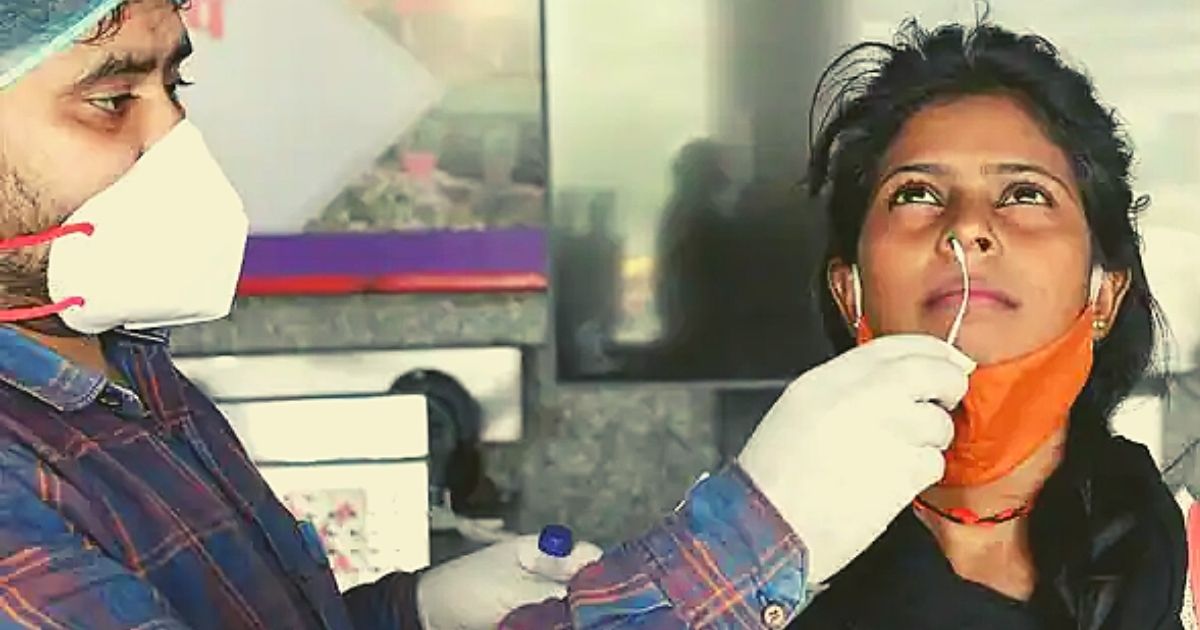
India's 'R-Value' Determining Rate Of COVID Infection On Rise, Northeast, Kerala Worst-Affected
Writer: Nishit Navin
I have lived in 7 cities across India. I completed my graduation with a triple major in English, Journalism, and animation. Currently, I am doing my master's in journalism from SIMC, Pune.
India, 2 Aug 2021 4:52 AM GMT | Updated 2 Aug 2021 4:54 AM GMT
Editor : Palak Agrawal |
Palak a journalism graduate believes in simplifying the complicated and writing about the extraordinary lives of ordinary people. She calls herself a " hodophile" or in layman words- a person who loves to travel.
Creatives : Nishit Navin
I have lived in 7 cities across India. I completed my graduation with a triple major in English, Journalism, and animation. Currently, I am doing my master's in journalism from SIMC, Pune.
R-value is an estimated number that determines the rate of infection. After a steady decline, the R-value is climbing again with the number inching closer to 1. For the pandemic to be controlled and eventually end, the R-value needs to be below one and decline steadily.
After a decline in COVID-19 cases in the past few months, India has now started witnessing a rise in virus infections.
The trend was recorded by a researcher at the Institute of Mathematical Sciences the last week. Sitabhra Sinha while speaking to The Print said that the country's R-value increased and is inching closer to 1 —the point that could lead to a rise in active cases once again.
Reaffirming the concerns, AIIMs Chief Dr Randeep Guleria said that the R-Value moving up was an indication that strict containment measures were the need of the hour in several states across the country.
"Starting from 0.96, and going all the way up to 1, the rise in R-Value is a cause of concern. Simply put, this means that the chances of infection spreading from a person, who has COVID, to others have gone up. The areas which are witnessing this surge should bring in restrictions and employ "test, track, and treat" strategy to break the chain of transmission," Dr Guleria told NDTV.
What Is R-Value?
R-value or the effective reproduction number is an estimate of how rapidly the infection is spreading. For example, the R-value of 0.90 means that every 100 people are giving the virus to 90 others. The value lower than one indicates that the number of new infections is lower than the number of infections in the preceding period. For the pandemic to be controlled and eventually end, the R-value needs to be below one and decline steadily.
Institute of Mathematical Sciences analysis found that during the peak of the second wave, the overall R-value of the country stood at 1.37. The figure declined to 1.1 by the end of the first week of May.
A continuous decline since then meant that the R-value dropped to 0.78 between May 15 to June 26. However, the figure, since then, has seen a steady increase to 0.95 from July 3-22 July.
"India's overall active cases are fluctuating too much to get a reliable estimate, but data is pointing at a value close to one. It may tip over either way in the coming few days," said Sitabhra Sinha from the Institute of Mathematical Science, according to NDTV.
Worrying Trends In Kerala And Northeast
Currently, Kerala is the worst affected state in the country. On July 28, with over 22,000 cases, the stated accounted for over 50 per cent of the total cases in the country. The R-value of Kerala has remained steady at 1.11 over the last two weeks. It means that the state is likely to remain at the top spot in the number of infections reported.
In the North East, most states have an R-value higher than one. Only Tripura has an R-value significantly below 1. With 0.98, Manipur is the second state to have a value lower than one.
In recent weeks, Delhi has seen an increase in R-value as it inches closer to one. Pune, which at one point was the worst affected city in the world, now has an R-value higher than one.
Also read: COVID-19: Serosurvey Shows 44% Of Kerala's Population Infected, 79% In Madhya Pradesh
 All section
All section














